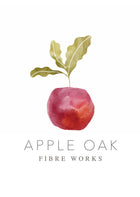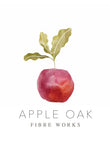Natural Dyeing course Module 2 Mordanting, Part 1 - Alum

Let me introduce you to Mordanting Part 1 Alum:
The understanding, cleaning and mordanting of fibres, will make or break your project. Many hiccups, be it stripes, uneven, no colour, washed out colour, poor fastness, unexplained marks are often due to some mishap before dying. I can never stress enough how important it is to get your fabric well prepped and correctly mordanted. Hence, why the mordanting Module is going to be as big as the Dyeing module. Yay!
But saying that, always keep in mind that you are working with nature and therefore, it cannot be totally controlled. Some errors will be unexplainable and sometimes the fault lies in the manufacture of the fibre/fabric/yarn. But before we start, it is important to really know what mordanting is and where it comes from...
The course content is exciting, to say the least and will answer questions like:
What is Alum? What Alums are out there? Where does it come from? Where can I find Alum locally? How is it made? How do we use it? Why do we use it? And much more.
There will be quizzes throughout the course, full access to course material, and regular zoom meetings with me and the group before and after project works. Have a look at the content below:
Course content Module 2 Mordanting, part 1 - Alum:
- What is mordanting?
- Mordanting – A history of Alum
- Native Alums
- The manufacture of Alum
- Ammonium Potash Alum from Shale stone
- Aluminium Sulphate
- Today’s Alum
- Aluminium from plants
- Plant Taxonomy with Tristan Lienhard
- Plant Aluminium accumulators
- Let’s talk about Lycopods
- Let’s talk about Symplocos
- Let’s talk about other Alum rich plants
- Using Alum in your sustainable studio
- Using mineral alum mordants in your studio
- Protein & Alum
- Cellulose & Alum
- Using aluminium rich plant mordants in your studio
- Conserving and discarding Alum based mordants
- Using mineral alum mordants in your studio
A lot of research has gone into this specific course material covering history, present day and future use of Alum. Aluminium from plants was a particularly interesting subject, diving deep into the world's rich flora. You can see in the content that I added plant taxonomy to the course. It is vital to understand the differences between plants and the meaning of plant names, though I thought I would only add it much later, when writing about the actual natural dyeing plants. This part and any other gardening related topics, will be taught by Tristan Lienhard, a professional gardener and seed curator.

By diving deep into the differences of plant aluminium accumulators, it became apparent very quickly, that students will need to know about plant nomenclature.
Many are interested in creating a sustainable dyeing practice and with that in mind I added the chapters on how to use Alum in your studio. Using the same recipes and techniques I use in my own studio. Cold Alum mordants, how to create acetate with simple ingredients, how long you can use mordanting baths for and how to discard them safely.
*If you like to learn more about the One year Natural Dyeing course check out my other blog posts and sign up to our course specific email list
Natural Dyeing Course ~ what to expect – AppleOak FibreWorks
Natural Dyeing Course Module 1 – AppleOak FibreWorks
Next up: Module 2 Mordanting, part 2 - Iron



Leave a comment